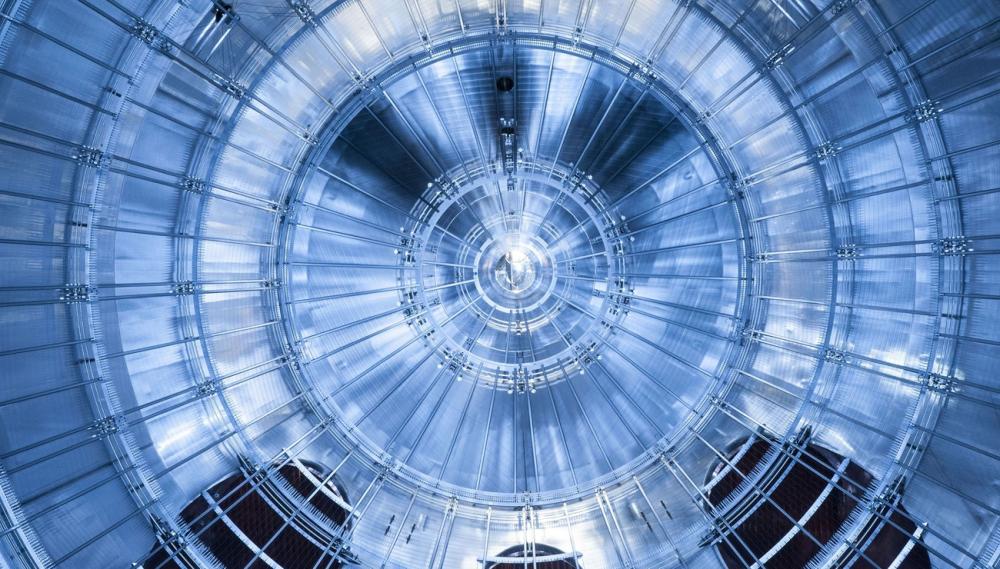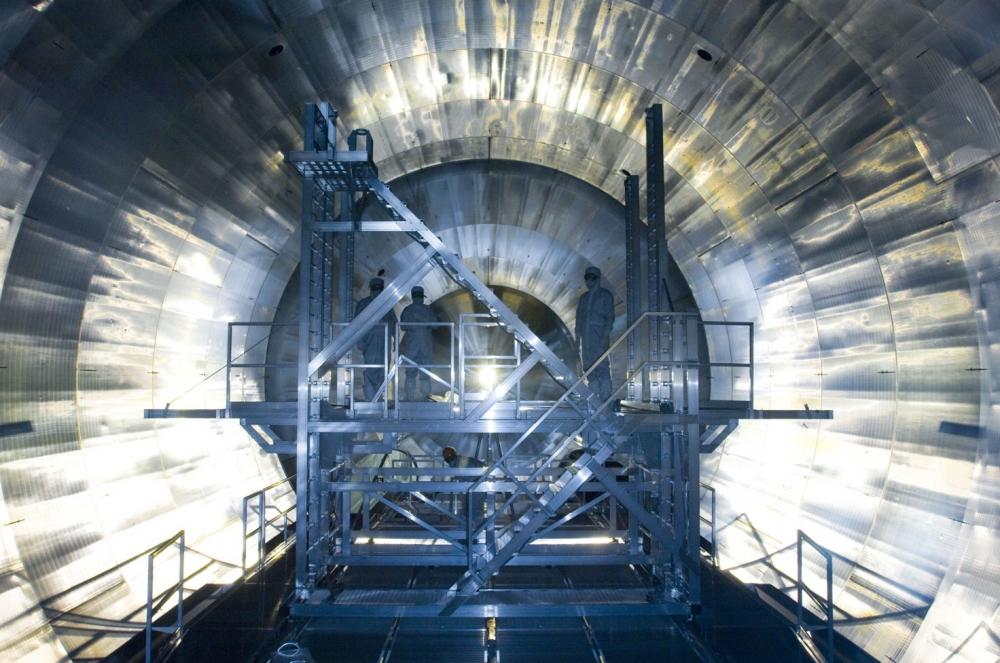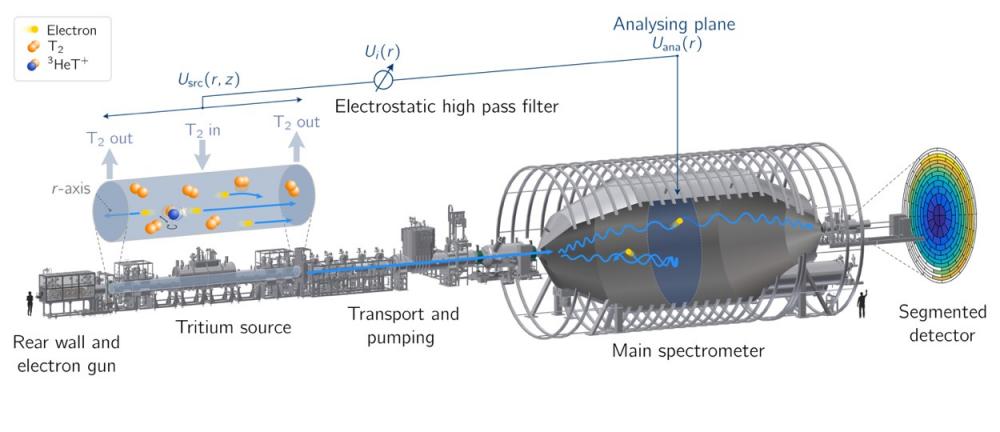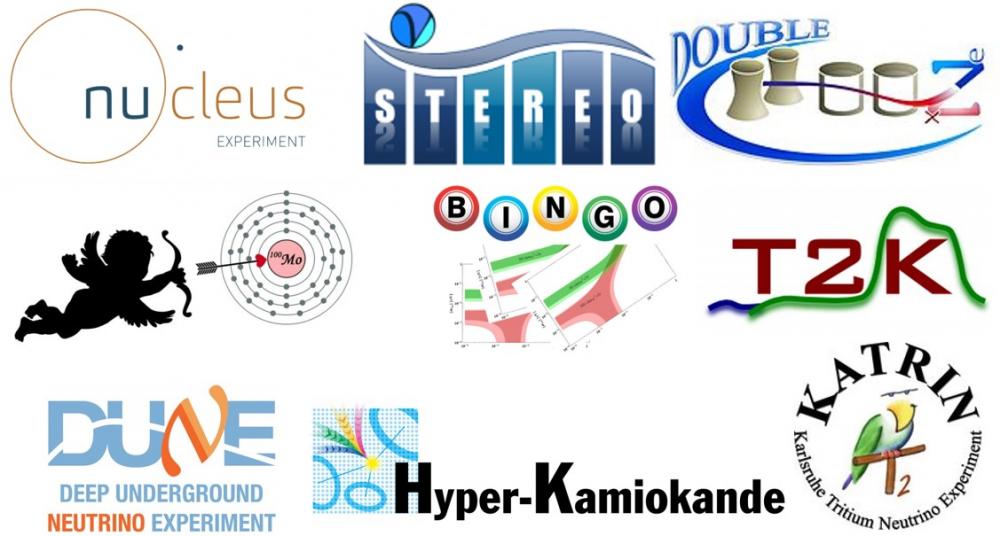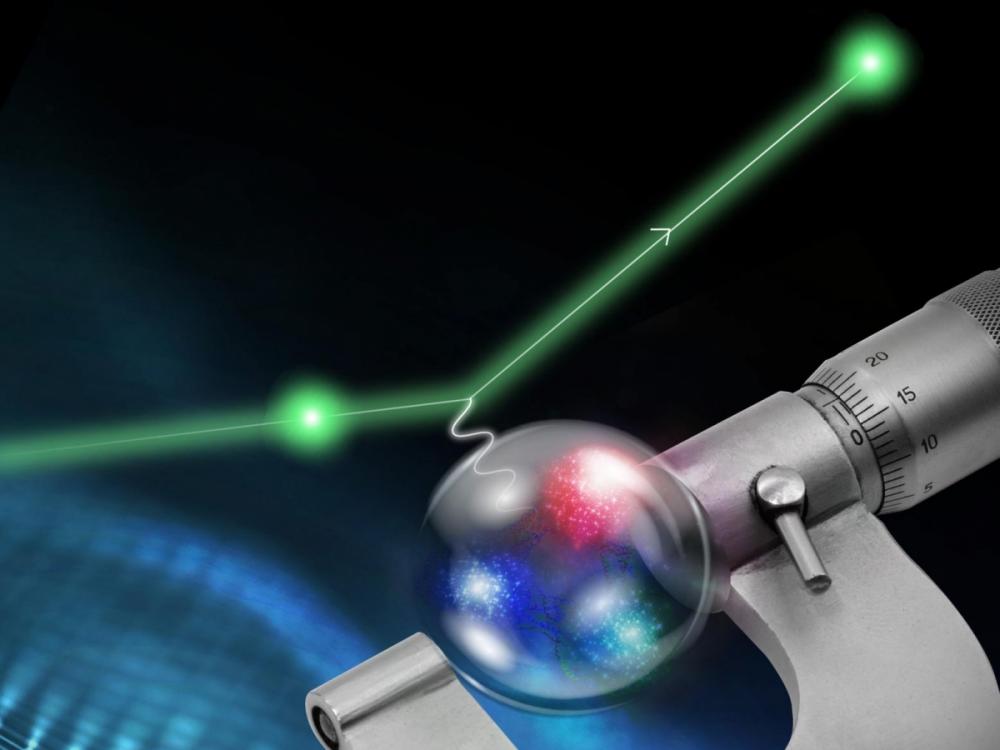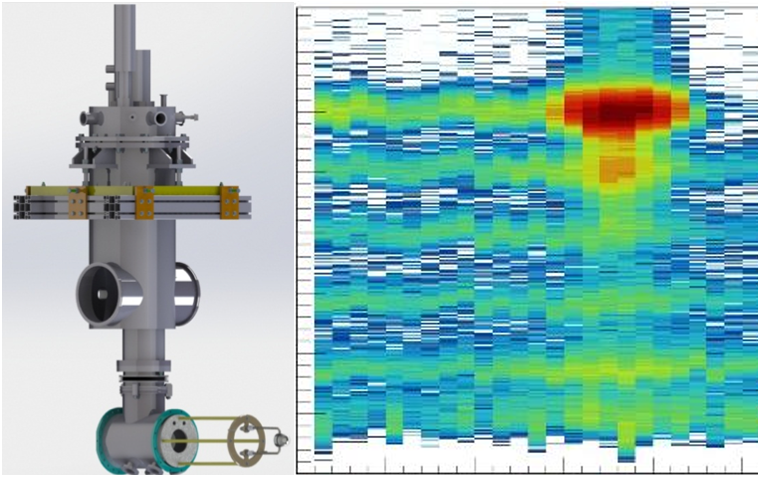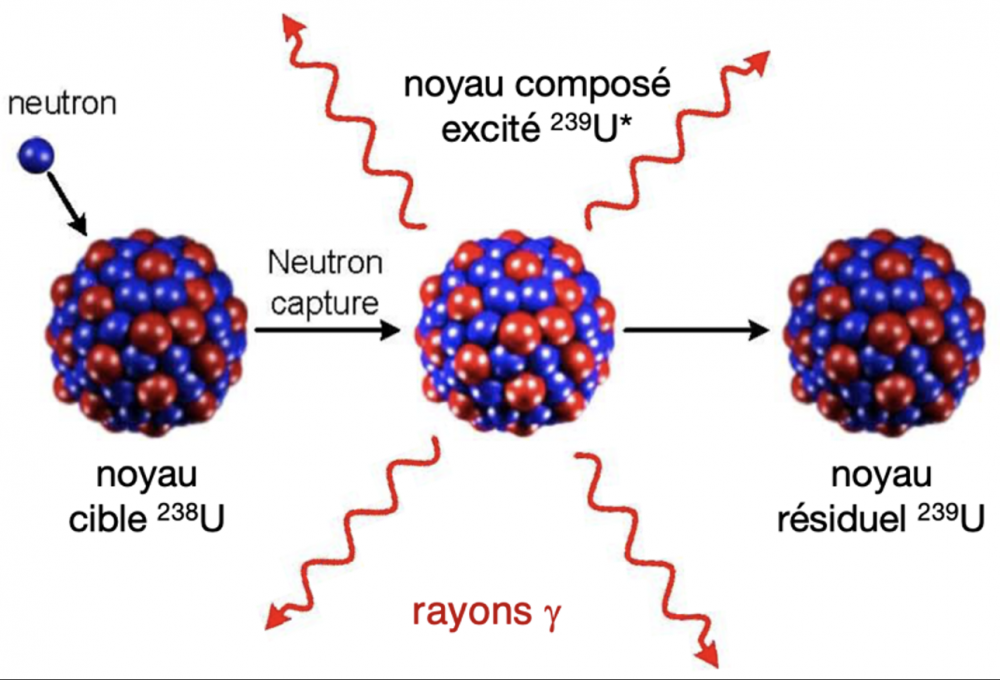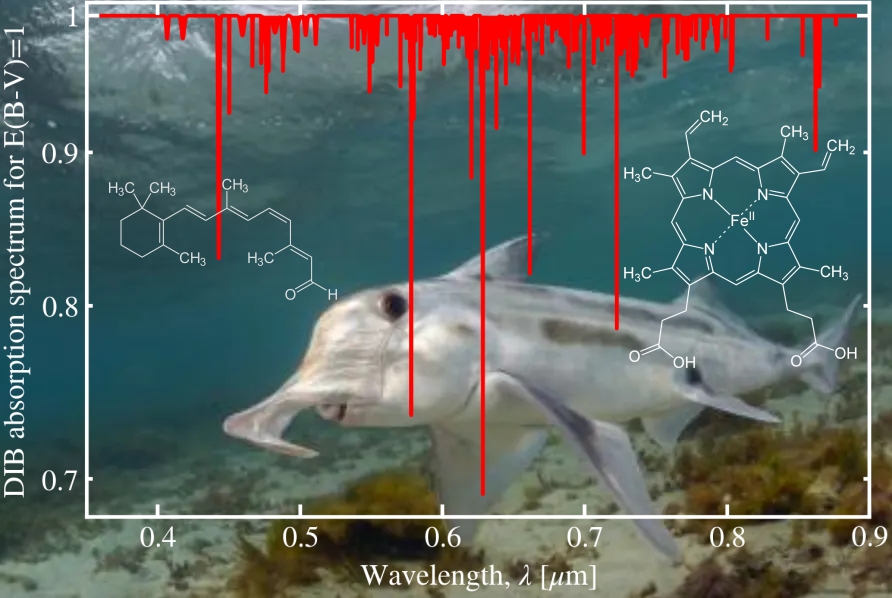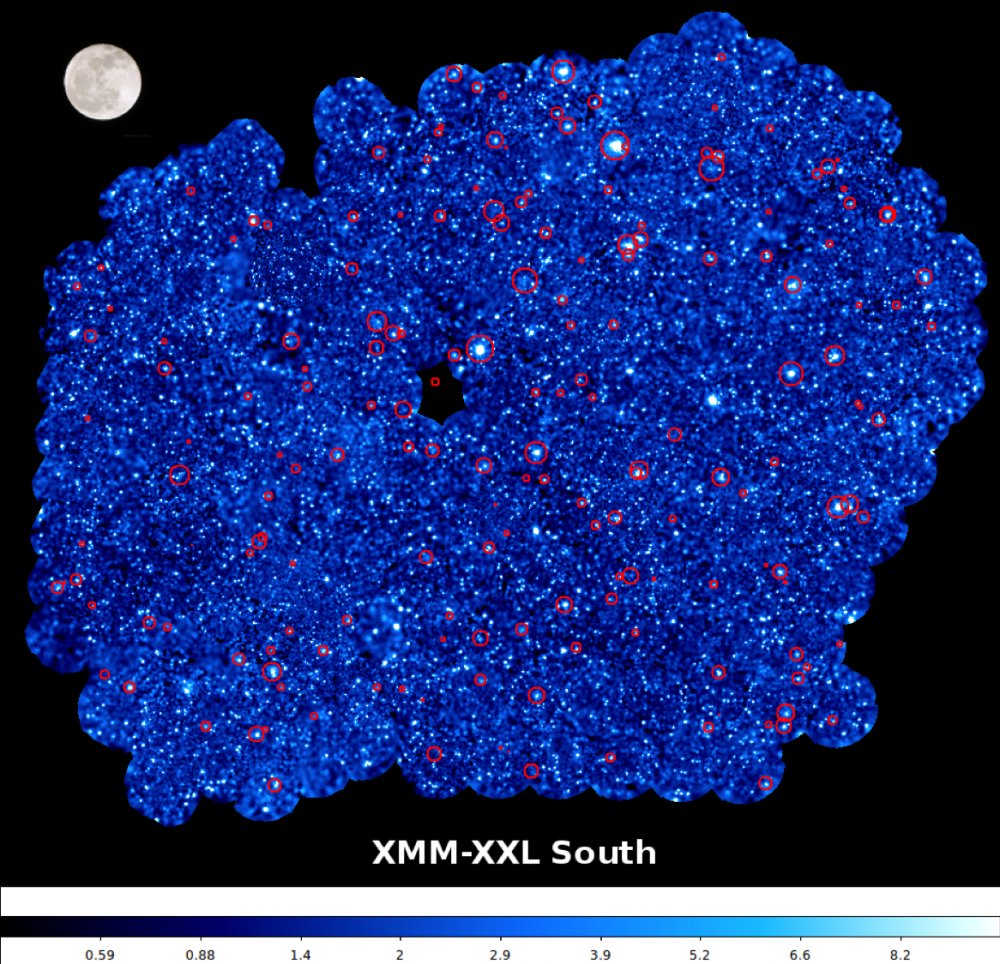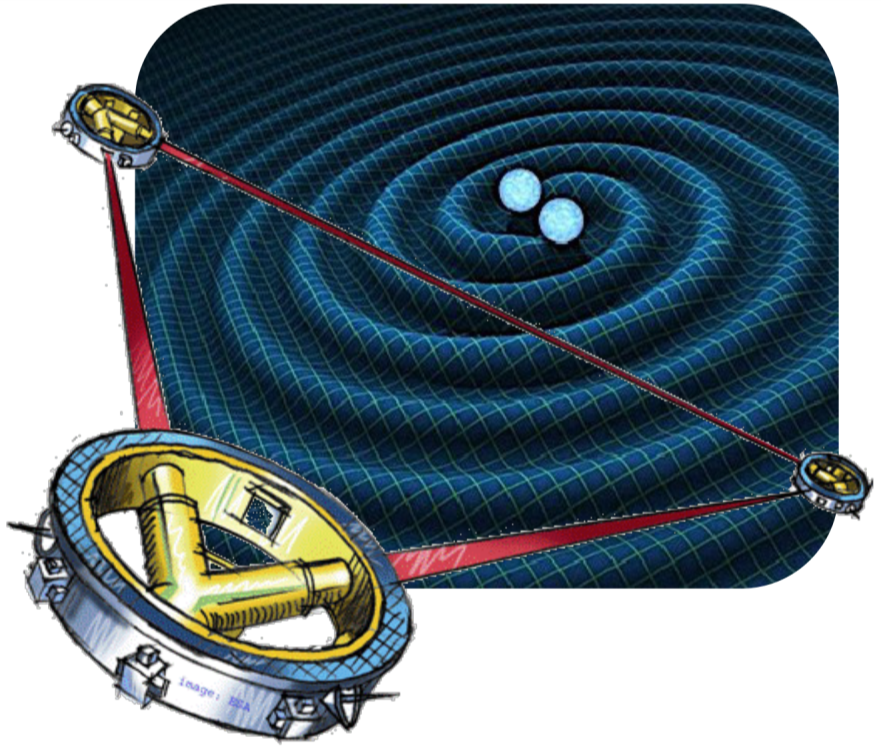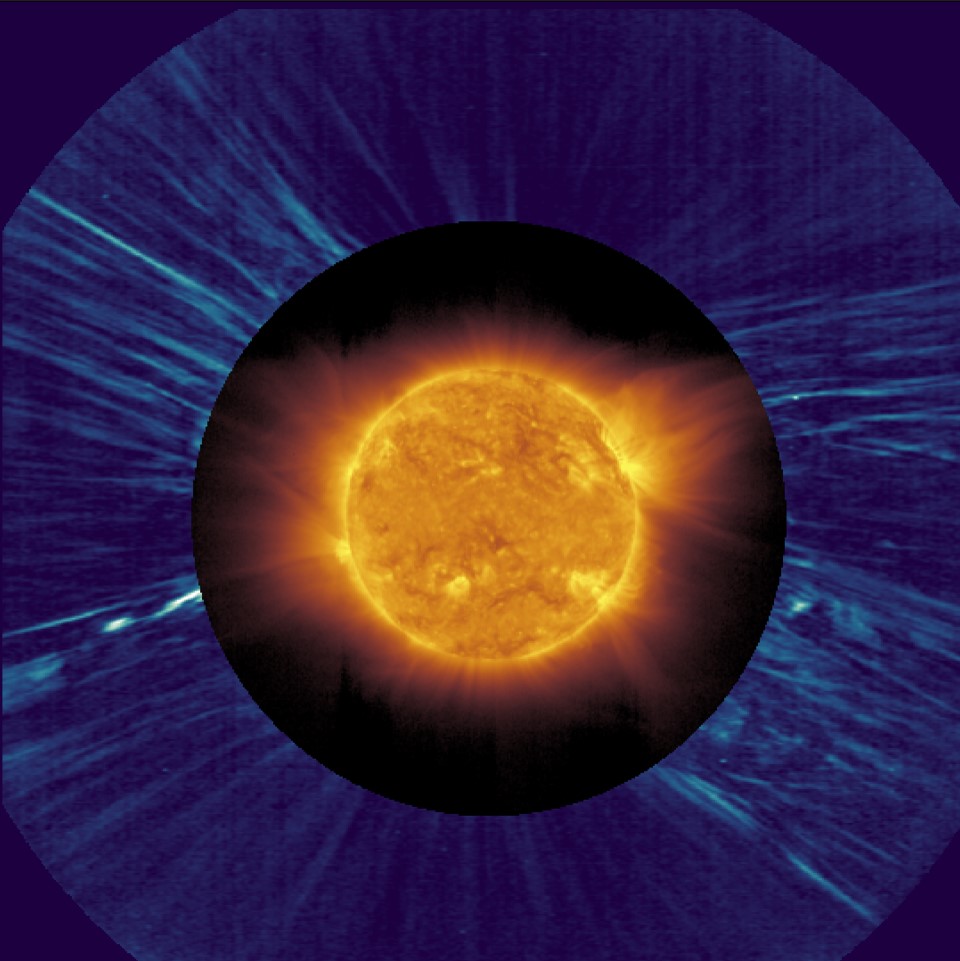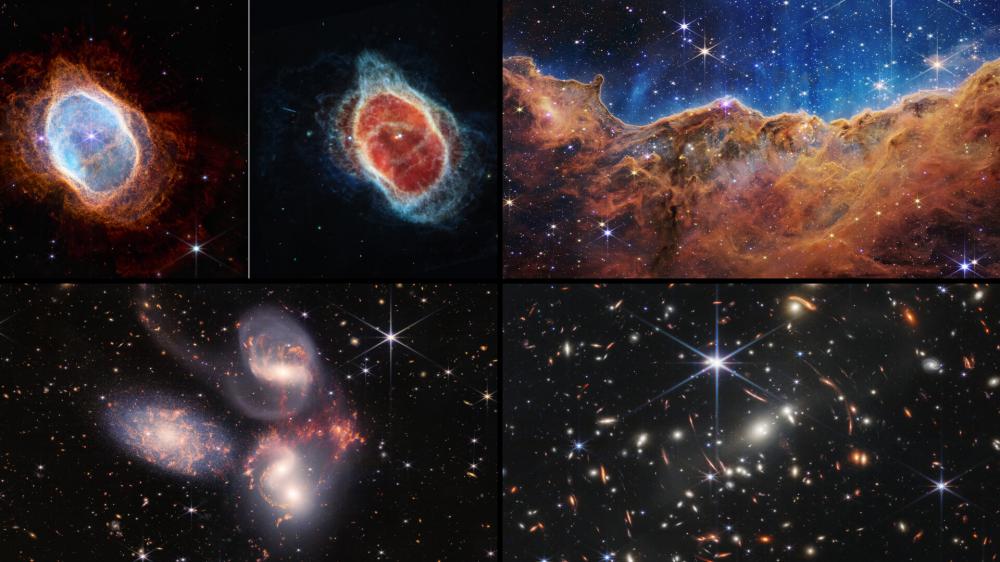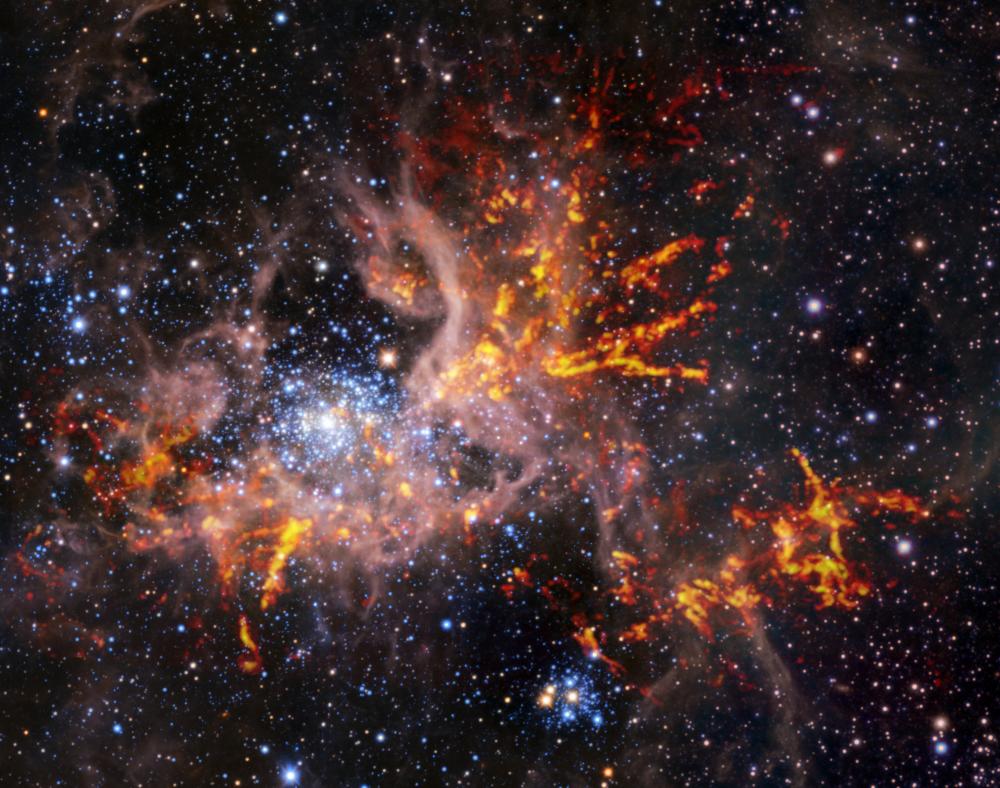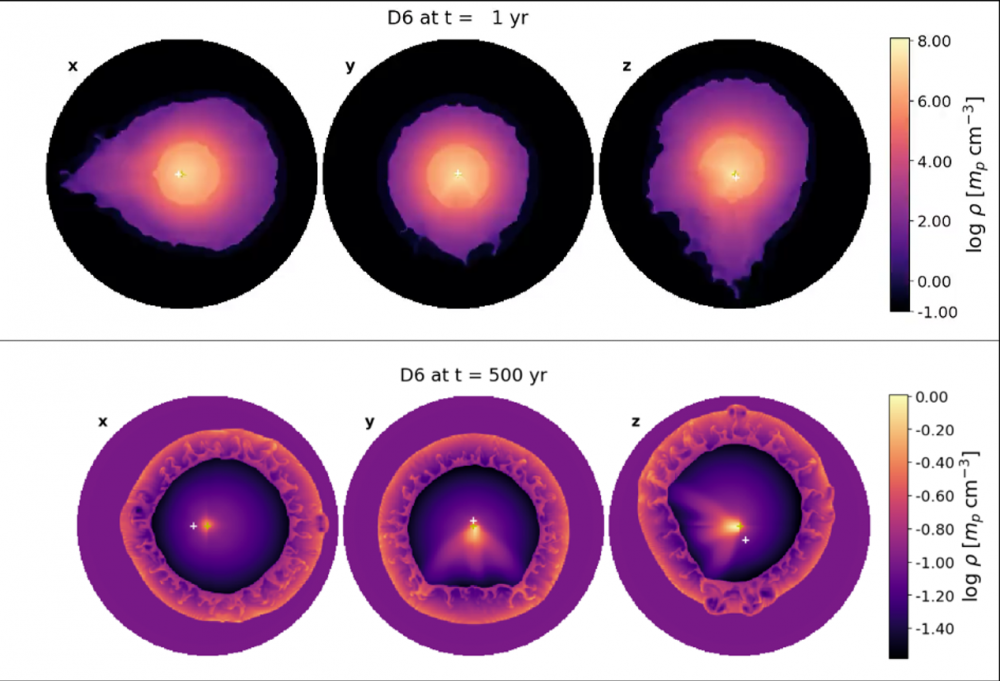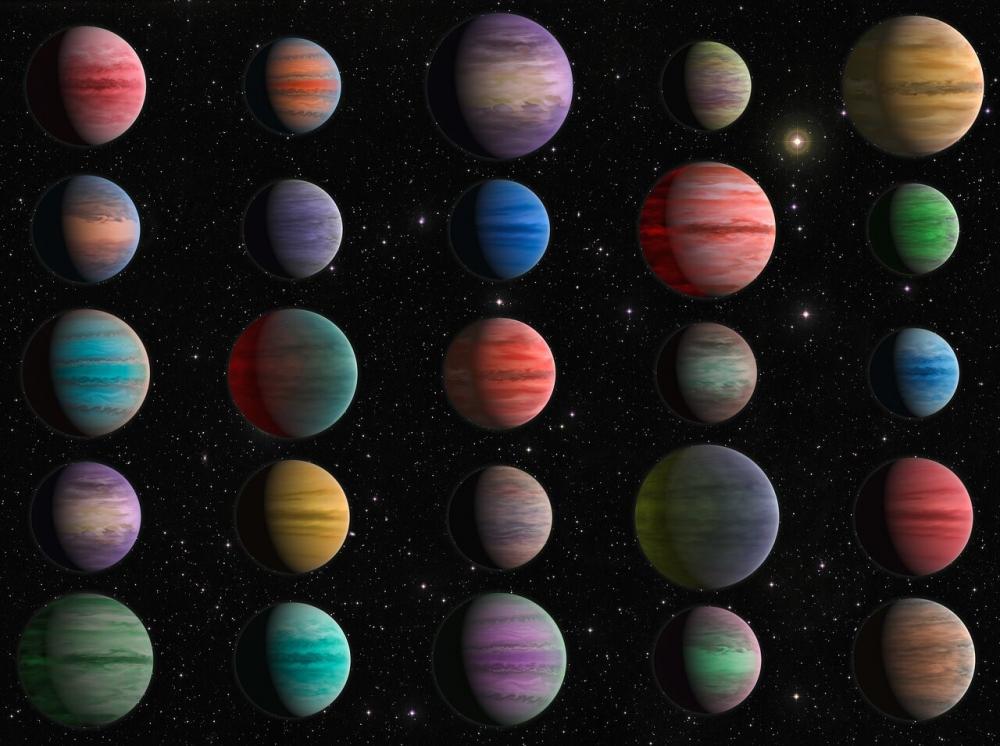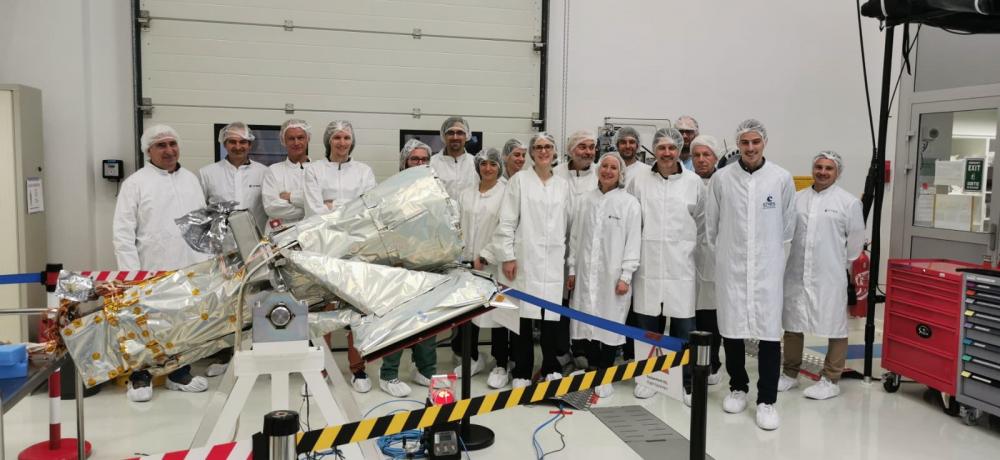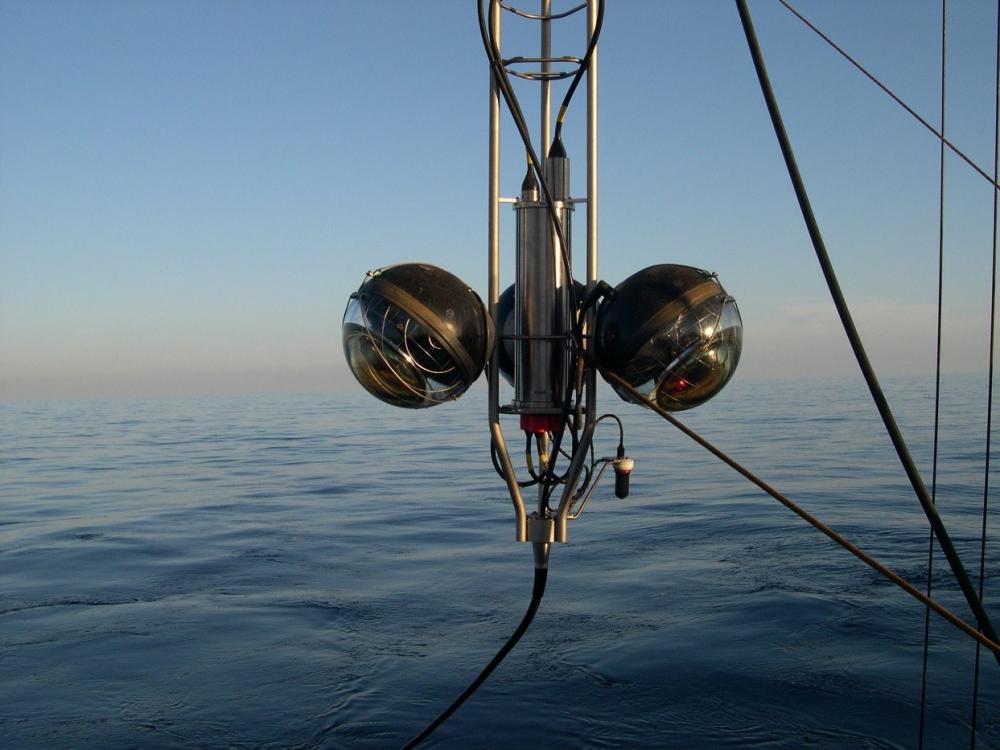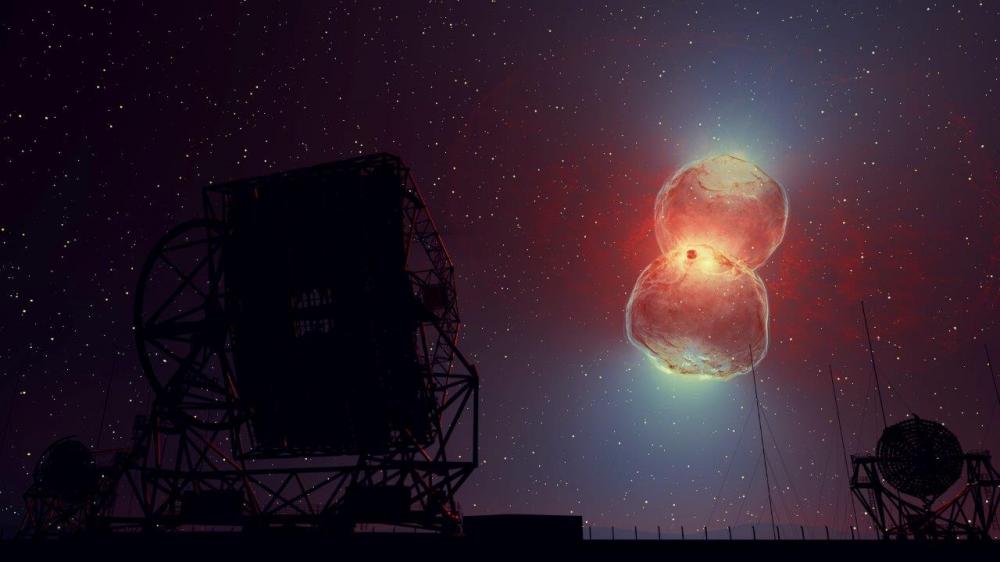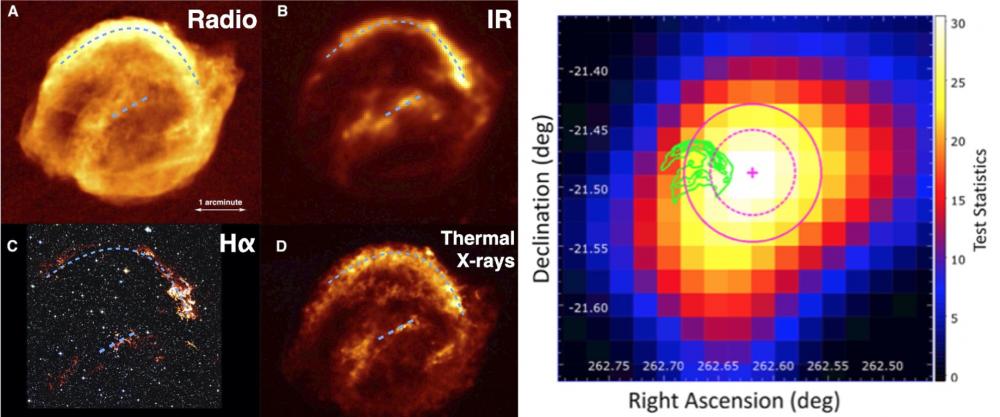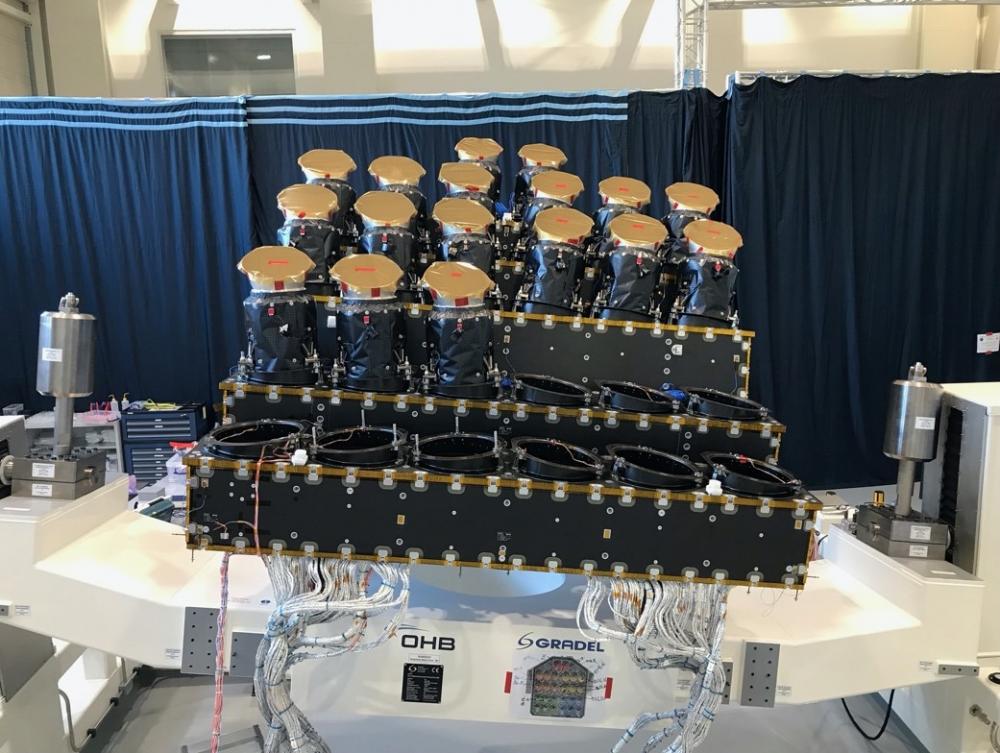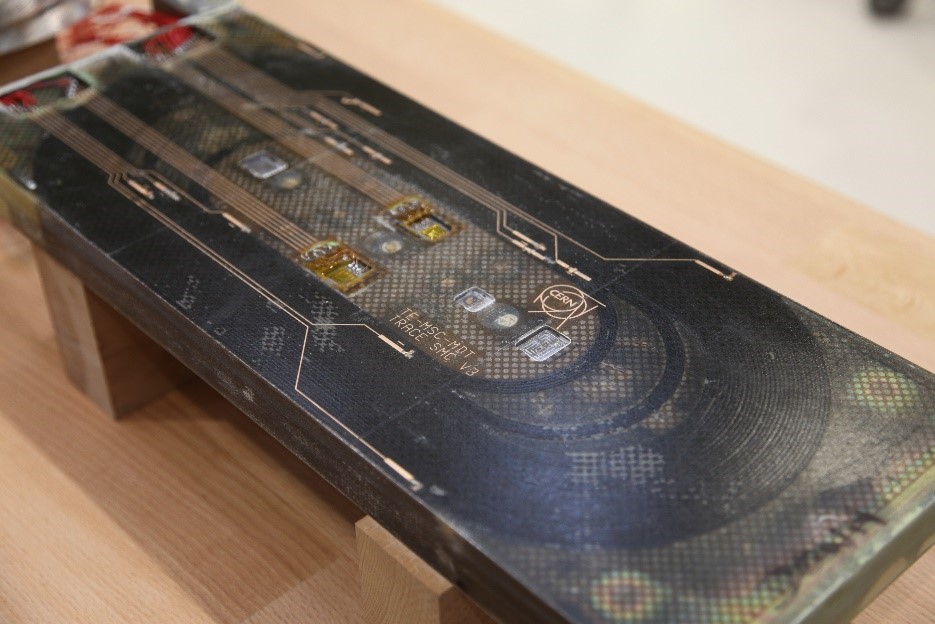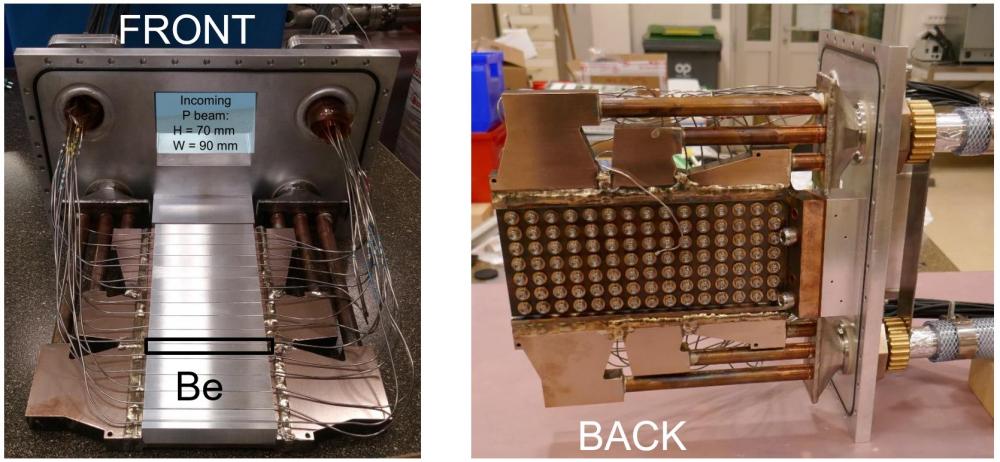The cosmic background neutrino is one of the predictions of the standard cosmological model, but it has never been directly observed. These so-called "relic neutrinos" could be captured on a radioactive nucleus like tritium. The resulting capture rate depends on the local density of relic neutrinos. Since massive neutrinos get caught by the gravitational potential of our galaxy and cluster locally, a modest local overdensity of relic neutrinos should exist on Earth. More exotic considerations could lead to more substantial overdensities. The KATRIN experiment published in June 2022 in Physical Review Letters its first search for relic neutrinos based on analysis of data recorded in 2019. The analysis, led by an IRFU physicist, improves on previous limits by two orders of magnitude.
The KATRIN collaboration has just recently reported a new upper limit of 0.8 eV/c2 on the mass of neutrinos. The KATRIN spectrometer also has a strong potential to search for new, so-called "sterile" neutrinos, based on a fine analysis of the tritium beta decay spectrum. The collaboration has just published its new results in Physical Review D based on the first two data campaigns acquired in 2019. This work reveals no evidence of a fourth neutrino, and KATRIN may well be a key player in clarifying the anomalies observed by some neutrino oscillation experiments over the past 20 years or so.
The KATRIN (KArlsruhe TRItium Neutrino Experiment) located at the Karlsruhe Institute of Technology (KIT) has just crossed a symbolic threshold. In a paper published in the prestigious journal Nature Physics, the collaboration reveals a new upper limit of 0.8 eV/c^2 for the mass of neutrinos. This result is of fundamental interest for both particle physics and cosmology.
At Irfu, neutrino physics is studied using different sources such as reactors, accelerators and radioactive sources.
Irfu teams have been engaged for several decades in a long quest to study the neutrino in all its aspects, to understand its place in the Standard Model of particle physics and even more, but also its contribution to the evolution of the Universe since its first moments. The traditional summer conferences organized last year were an opportunity to measure the progress made by the armada of international experiments with which our institute is working to achieve this ultimate goal. A look back at year 2021, full of lessons and promises for the future...
Nucleons (protons or neutrons) are the constituents of the nucleus of atoms. The exploration of their internal structure is traditionally done by determining "form factors". These quantities are accessible through the study of elastic electron-proton scattering and electron-positron annihilation reactions into proton-antiproton (or the time reverse reaction of proton-antiproton annihilation into electron-positron). They define the distribution of charge and magnetic moments inside the nucleon, induced by the quarks and gluons that are present in the nucleon. Ten years ago, a theoretical model giving an original vision of these distributions was proposed by a collaboration involving a physicist from Irfu [1]. Since then, the accumulation of experimental data has reinforced the validity of this model, which is able to give a picture of the proton and a scenario for the formation of hadronic matter with a spatio-temporal resolution never achieved before. We have access to phenomena on a spatial scale of a hundredth of a femtometer and a temporal scale of the order of 10-25 s, which is 100 times less than the time the light takes to cross a proton. These results are the subject of a recent publication in the journal Physical Review C [2].
A new window into the deformation of nuclei has been recently opened with the realisation that nuclear collision experiments performed at high-energy colliders, such as the BNL Relativistic Heavy Ion Collider (RHIC) or the CERN Large Hadron Collider (LHC), give access to the shape of the colliding isotopes. A collaboration between high- and low-energy theorists, including researchers from IRFU, has demonstrated that quantitative information on nuclear deformations can be obtained and has shown that the isotope 129Xe appears as triaxial, i.e. a spheroid with three unequal axes. This result represents the first evidence of triaxiality in nuclear ground states attained in high-energy experiments. Moreover, it opens the way to exciting future investigations at the interface of low- and high-energy nuclear physics.
The pygmy dipole resonance (PDR) is a vibrational mode of the nucleus that occurs in neutron-rich nuclei. It is described as the oscillation of a neutron skin against a core symmetric in number of protons and neutrons (Figure 1). The PDR has been the subject of numerous studies, both experimental and theoretical. Indeed, the study of the PDR has been and still is of great interest since it allows to constrain the symmetry energy, an important ingredient of the equation of state of nuclear matter that describes the matter within neutron stars. Moreover, the PDR is predicted to play a key role in the r-process (a process that could explain the synthesis of heavy nuclei) via the increase of the neutron capture rate. However, despite numerous experiments dedicated to the study of the PDR, using charged particle or gamma-ray beams, a consistent description could not be extracted. Thus, new experimental approaches are needed to better characterize this vibrational mode of the nucleus.
The first measurement of Short-Range Correlations (SRC) in an exotic nucleus took place in May 2022 with the Cocotier instrument at the GSI facility in Darmstadt, Germany. This experiment is a milestone in the program that was started in 2017 with a grant from the French Research Agency that allowed physicists to build a liquid hydrogen target (see previous highlight). The goal of this experiment is to test the hypothesis that nucleon can form compact pair, the so-called SRC pair. This measurement campaign allowed us to gathered experimental data for about 60 hours with 16C beam and with a 12C beam for approximately 40 more hours in order to have a reference measurement with a well-studied stable beam. The IRFU team took a major role in preparing and running of this experiment, and is now in charge of the data analysis together with MIT, TU Darmstadt and LIP Lisbon team.
The DPhN, in collaboration with the Department of Reactor Studies of Cadarache (DES) and the Institute of Particle and Nuclear Physics of Charles University in Prague (Czech Republic), studied the properties of gamma rays emitted by uranium isotopes during neutron capture reactions. Gamma-ray spectra measured at CERN's n_TOF facility were used as a test bed for nuclear reaction models and their ingredients, including the photon strength function that characterises the ability of a nucleus to emit or absorb photons. This work has enabled consistent modelling of the photon strength functions of the uranium isotopic chain (234U, 236U, 238U) and confirmed the presence of a particular oscillation mode of the nucleus shape at low excitation energy. This study was carried out as part of the PhD thesis of Javier Moreno-Soto [1] and the full results are published in Physical Review C [2].
A team from the Département d'Astrophysique, in collaboration with the start-up Iris.AI, has shown that one could find, in select biology studies, some relevant information to better understand the interstellar medium. These results will soon appear in the Journal of Interdisciplinary Methodologies and Issues in Science.
For the first time since the XMM launch (1999), a cosmological analysis constraining the density of matter in the universe, from a catalog of 178 galaxy clusters detected by XMM, has been possible and in an autonomous way, i.e. with its own distance measurements and without calling upon additional information from numerical simulations or other cluster samples. This analysis was conducted in the framework of the XXL consortium, mainly by Christian Garrel during his thesis at the Astrophysics Department (DAP) of CEA Paris-Saclay (see the article on arXiv).. The results confirm the standard cosmological model in a completely independent way, with an accuracy rivalling with other probes covering much larger portions of the sky. The existing "cosmological" tension between the cosmological analyses of the clusters and the CMB PLANCK is thus lifted; there is no longer any need to use massive neutrinos.
This cosmological analysis from clusters has been possible thanks to the new method ASpiX, developed at DAP allowing to model properly the distant clusters. In the distant Universe, we only detect massive clusters, thus blue, which appear red because of the expansion of the Universe. Mathematically, the software analyses all possible combinations of the effect of cosmology on the properties of clusters.
The cosmological analysis exploiting all the observations of the XXL program is in progress and will include about 300 clusters. The novelty is that it will combine the ASpiX method with artificial intelligence techniques that allow identifying very quickly the cosmological model that best reflects the observed properties of the cluster population.
The four principal investigators receive almost 10 million euros for their project 4D-STAR, which will develop and deliver innovative numerical models of rotating magnetic stars in three spatial dimensions throughout their evolution.
ERC Synergy Grants of the EU's research and innovation programme Horizon Europe, help groups of two to four outstanding researchers bringing together complementary skills, knowledge and resources in one ambitious overarching project, addressing some of the world’s most formidable research problems. The projects typically span multiple scientific disciplines - in the case of 4D-STAR astronomy, theoretical physics, fluid mechanics, applied mathematics, computer science and software development.
The LISA (Laser Interferometer Space Antenna) space mission by ESA and NASA, will observe gravitational waves from space. After its launch around 2035, LISA will observe in the low frequency band of the gravitational waves spectra and will capture the signal coming from sources which are not detected yet in the high frequency band of ground-based detectors such like Virgo, LIGO, KAGRA, or GEO600. Among the new sources of gravitational waves, the most represented are the galactic binaries whose number of detections should amount several tens of thousands. The galactic binaries are double systems made of compact stars such like neutron stars or white dwarfs in different combinations. Within the low frequency band, galactic binaries are detected during inspiral, that is to say several thousand years before fusion which is detected by ground-based detectors. Therefore, the signature of effects due to structure or internal dynamics of compact stars on the gravitational waves can potentially be detected over the lifetime of the space mission. LISA will allow to understand the state of matter inside compact objects within binary systems, their deformability, or their magnetic fields through the secular evolution of the orbits. In a recent study published in Physical Review D (DOI: https://doi.org/10.1103/PhysRevD.105.124042), a team from SYRTE in Observatoire de Paris and LDE3 from DAP/IRFU at CEA, demonstrated that the effect of magnetism within galactic binary could be measured by LISA.
As part of the Solar Orbiter science support activities and in conjunction with the ERC Synergy WholeSun grant, researchers from CEA Paris-Saclay, together with an international collaboration, have developed advanced numerical simulations to study the formation of structures of the solar wind. These simulations allow studying the interaction of the convection at the solar surface with the magnetic field. They reveal the appearance of twisted magnetic structures that can participate in the creation of switchbacks.
Nine months after its launch, the James Webb Space Telescope provides unprecedented images of an exoplanet, the first ever obtained in the mid-infrared. These images should revolutionize our knowledge of extrasolar worlds. A team of French astronomers has been involved in the observations of this planet and in the design of the coronagraphs of the telescope.
Launched on December 25, 2021, the James Webb completed its test phase in July 2022. The science programs have since begun and are already producing their first results, including the first image of an exoplanet obtained in the mid-infrared: HIP 65426 b. It is a very young giant exoplanet, about 15 million years old, located at 90 astronomical units from its star. With an estimated mass of about 7 Jupiter masse, it had been discovered with the European instrument Sphere at the Very Large Telescope in 2017. The instruments of the James Webb now make possible its direct observation in the infrared.
The dawn of a new era in astronomy has begun as the world discovers for the first time the full capabilities of the NASA/ESA/CSA James Webb Space Telescope. The telescope's first color images and spectroscopic data, which reveal a spectacular array of previously elusive cosmic features, were released on July 12, 2022.
- website with comparison of Hubble and Webb images (crédit John Christensen)
- Link to download webb pictures
- Link to download the opposite composite image
- Link to NASA video of July 12
Understanding the star formation process is a major open question in contemporary astrophysics. It is indeed the process that controls the evolution of galaxies since their birth, gradually transforming their interstellar gas into stars and enriching it with heavy elements and dust grains. It is also the formation of stars that is at the origin of the formation of planetary systems and the appearance of life. This process is however complex and still very poorly understood. It involves the understanding of a series of hydrodynamic instabilities leading to the collapse of a molecular cloud, in which gravity, magnetic field and chemistry play a central role. Moreover, the feedback, i.e. the ionizing radiation and the wind from newly formed massive stars, has the effect of destroying the rest of the molecular cloud and thus inhibiting star formation after a few million years. This feedback is a key element, but it is still insufficiently understood.
Scientists from the CosmoStat laboratory at CEA have produced within the international science collaboration UNIONS (Ultraviolet Near Infrared Optical Northern Survey) a reference catalogue of 100 million gravitationally lensed distant galaxies, one of the largest datasets ever created. This new collection is based on thousands of deep images of the northern sky captured by MegaCam, a large digital camera built at CEA, mounted on the Canada-France-Hawaii Telescope (CFHT). Three new publications present dark-matter mass maps of the cosmic web, showing how the high-density regions in these maps help measure the still poorly known properties of dark matter. In the near future these observations will provide essential support to the European space telescope Euclid. This ESA satellite mission will map the cosmic web over the entire accessible sky at an unprecedented resolution to measure the properties of the mysterious dark energy.
While type Ia supernovae are considered as highly symmetric supernovae, the explosion in a tight binary system composed of two white dwarfs revises this paradigm. An international team (Japan, Canada, France), including a researcher from the Department of Astrophysics/AIM Laboratory of CEA Paris-Saclay, publishes a study in the Astrophysical Journal that reveals that the distinctive asymmetric structures of such a supernova leave post-mortem imprints on the morphology of the ejected matter. These morphological signatures persist and are observable in the late phase of supernova remnants. These results open the possibility to identify and characterize the explosion scenario of this type of supernova.
On the evening of the 28th, we could read on NASA's blog: "It's official, the alignment of NASA's James Webb Space Telescope is now complete"!
To say that all the instruments of the James Webb Space Telescope are perfectly aligned, means that the primary mirror is well adjusted. The images are already breathtaking while the adjustment phase of all the elements of the telescope is not finished yet.
For this test, the Webb telescope pointed at a star and the quality of the alignment was verified with a part of the Large Magellanic Cloud providing a dense field of hundreds of thousands of stars on all instrument sensors. Webb's three imaging instruments are NIRCam (images below at 2 microns wavelength), NIRISS (image at 1.5 microns) and MIRI (image at 7.7 microns). MIRI detects light in a lower energy range (or longer wavelength) than the other instruments, revealing the emission from interstellar clouds as well as starlight.
These images are used to assess image sharpness, but also to accurately measure and calibrate subtle image distortions and alignments between the instrument's sensors as part of the overall Webb instrument calibration process.
Archival observations of 25 hot Jupiters by the NASA/ESA Hubble Space Telescope have been analysed by an international team of astronomers, enabling them to answer five open questions important to our understanding of exoplanet atmospheres. Amongst other findings, the team found that the presence of metal oxides and hydrides in the hottest exoplanet atmospheres was clearly correlated with the atmospheres' being thermally inverted.
Read the science release : Hubble observations used to answer key exoplanet questions | ESA/Hubble (esahubble.org)
The French teams of the ECLAIRs and MXT telescopes, instruments at the heart of the SVOM mission, experienced an important moment during March 2022. First, a general review of the two projects took place at CNES in Toulouse in front of a group of experts. This review allowed to verify that the two instruments meet the technical specifications and will be able to carry out the scientific mission. Then a series of team visits took place in the two CNES clean rooms housing the flight models of the two instruments, ECLAIRs and MXT.
On February 12, 2022, the ANTARES neutrino telescope (Astronomy with a Neutrino Telescope and Abyss environmental RESearch) put an end to its data taking started in 2007. During 15 years, thousands of neutrinos, precious elusive particles witnesses of the cataclysmic phenomena of the Universe, were detected at 2500 m in the Mediterranean abyss. The objective: find abnormal accumulations in the neutrino sky map revealing sources at the still mysterious origin of the cosmic rays, a rain of particles discovered more than a century ago. The CEA team played a leading role in the success of this project, a pioneer in multi-messenger astronomy.
The Solar Orbiter mission, launched on February 10, 2020 from Cape Canaveral has already traveled more than 2 billion km. Since its passage just 470 km above the Earth in November 2021, the science mission has officially begun. On March 26, 2022, Solar Orbiter passed within 0.32 astronomical units of our star (about 1/3 the distance from Earth to the Sun) for its fourth perihelion (the point in its orbit where Solar Orbiter is closest to the Sun) at a speed of 198,000 km/h. On this occasion, all 10 instruments onboard will be jointly switched on and pointing towards our star. As the cycle 25 of magnetic activity of the Sun is in full rise of intensity, it is highly probable that many eruptive events will be observed with the STIX telescope (Spectrometer Telescope for Imaging X-rays) whose detectors, the Caliste-SO, were conceived, realized and qualified at CEA.
On the occasion of this 4th perihelion, this milestone delivers one of the first X-ray images from STIX as well as new simulations of the Solar model from a DAp team, which have given rise to recent articles (see end of page)
IRFU scientists and the H.E.S.S. collaboration observe time-dependent particle acceleration in our Galaxy for the first time. Novae are powerful eruptions on the surface of a white dwarf in a binary star system, in which a larger star and a smaller star orbit each other. A nova creates a shock wave that tears through the surrounding medium, pulling particles with it and accelerating them to extreme energies. The H.E.S.S. high-energy gamma-ray observatory in Namibia has now been able to observe this acceleration process for the first time. Surprisingly, the detected nova seems to cause particles to accelerate at energies reaching the theoretical limit.
These results were published in Science: https://www.science.org/doi/10.1126/science.abn0567
The explosion of a star produces a shock wave that propagates at more than 5000 km/s for centuries and it is thought that these shocks are the main source of highly energetic particles called cosmic-rays. Studying the high-energy photon emission of supernova remnants allows us to probe the nature of the accelerated particles, their energy and their composition. A French team led by researchers from the Astrophysics division/AIM laboratory of CEA-Irfu at Paris-Saclay has confirmed the detection of gamma-ray emission above an energy of 100 MeV in the direction of the historic Kepler supernova remnant. Twelve years of observation from the LAT instrument onboard the NASA Fermi space telescope were needed to confirm the existence of an efficient particle acceleration in this remnant, one of the youngest in our Galaxy. The researchers have found that the gamma-ray emission most likely results from the interaction of accelerated ions with the surrounding medium but depending on the amplitude of the magnetic field, several scenario are plausible. This study has been accepted for publication in the journal Astronomy and Astrophysics.
ESA's PLATO mission has been given the green light to continue its development after a successful critical review on January 11, 2022.
PLATO, or PLANetary Transits and Oscillations of stars, is the third medium-class mission in ESA's Cosmic Vision program. Its objective is to find and study a large number of planetary systems, with a focus on the properties of Earth-like planets in the habitable zone around solar-type stars. PLATO has also been designed to study stellar oscillations through asteroseismology, which will allow precise measurement of the parameters of the planets' host stars, including their age.
The review verified the maturity of the entire space segment (the service module and the payload module), confirming the robustness of the satellite-payload interfaces and the payload development schedule. Particular emphasis was placed on the serial production of the 26 cameras, and the robustness of the development schedule for both modules. PLATO will use the 26 cameras to discover and characterize exoplanets orbiting stars similar to our Sun.
The LEAS (Laboratoire d'Etude des Aimants Supraconducteurs) at CEA Paris-Saclay has entirely manufactured a coil based on the superconductor Nb3Sn (niobium-tin), of the SMC (Short Model Coil) type. This coil is a short model intended to be assembled in a magnet structure, then to be tested at cryogenic temperature. Nb3Sn is being considered for future accelerator magnets generating magnetic fields up to 16 T (teslas), which would double the performance of the best magnets currently in use. However, this requires a great deal of technological development. This type of short coil has been developed by Cern, in collaboration with the CEA, to allow the testing of new technologies and new manufacturing processes under conditions representative of future high-field magnets. The fabrication of the SMC-CEA coil took place at LEAS from May to October 2021, then the coil was delivered to Cern to be assembled in a structure, and finally tested in a liquid and superfluid helium bath, under high current, in a dedicated station. The tests delivered encouraging results, demonstrating that LEAS is one of the few European laboratories that now has all the capabilities to manufacture Nb3Sn superconducting coils. This proof of feasibility validates the first step of the development program of high field magnets for future accelerators.
The objective of the realization of efficient compact neutron sources is to make it possible to perform neutron scattering experiments, with practically the same qualities as those carried out with neutron beam lines from research reactors of the Orphée type*.
These compact sources are obtained from a protons beam of medium-energy (3-50 MeV) and high current (100 mA) impinging on a light element target as beryllium. This interaction creates a neutron emission. In order to be used routinely, the target must be able to withstand long exposure to high irradiation without loss of performance.
The IRFU (DACM, DEDIP, DIS, DPhN) and LLB teams have realized a beryllium target implanted at the exit of the high intensity proton injector - IPHI (3 MeV)
at Saclay. They show that with this device it is possible to obtain the intensity of neutrons necessary to carry out a diffraction experiment in a reasonable time, demonstrating the competitiveness of such a source for neutron scattering compared to current small and medium power nuclear reactors.
*Former research reactor at Saclay, now shutdown.
The LEAS (Laboratoire d'Etude des Aimants Supraconducteurs) at CEA Paris-Saclay has entirely manufactured a coil based on the superconductor Nb3Sn (niobium-tin), of the SMC (Short Model Coil) type. This coil is a short model intended to be assembled in a magnet structure, then to be tested at cryogenic temperature. Nb3Sn is being considered for future accelerator magnets generating magnetic fields up to 16 T (teslas), which would double the performance of the best magnets currently in use. However, this requires a great deal of technological development. This type of short coil has been developed by Cern, in collaboration with the CEA, to allow the testing of new technologies and new manufacturing processes under conditions representative of future high-field magnets. The fabrication of the SMC-CEA coil took place at LEAS from May to October 2021, then the coil was delivered to Cern to be assembled in a structure, and finally tested in a liquid and superfluid helium bath, under high current, in a dedicated station. The tests delivered encouraging results, demonstrating that LEAS is one of the few European laboratories that now has all the capabilities to manufacture Nb3Sn superconducting coils. This proof of feasibility validates the first step of the development program of high field magnets for future accelerators.

